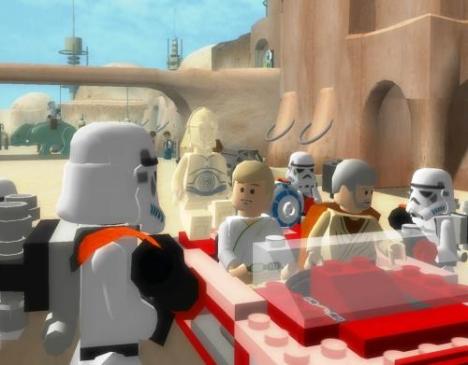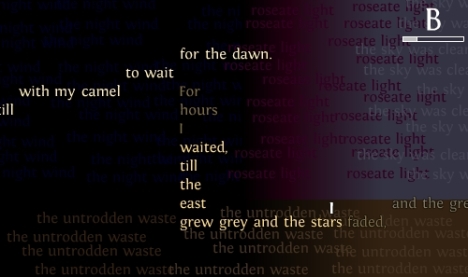Heavy Rain is the PS3’s much-anticipated new title from director David Cage. It’s a dark serial-killer thriller with adult themes and content – and Cage claims that with this title he’s produced a new genre apart from videogames – ‘Interactive Drama’.
I haven’t yet played the full game, but I have sampled the demo on PSN. I’ve been as hyped as anyone about the potential of this game, and, as is usual, actually playing it feels like rather an anticlimax. There are obvious areas of weakness – the voice acting is standard fare and the script seems unlikely to rise above a generic level; HBO this is not.
But more worrying is the frustration of a central game mechanism: actually controlling the characters. Movement is controlled by facing in a particular direction and pressing the right trigger to walk in that direction. It sounds reasonable in theory but due to changing camera angles it can result in your character swinging around in circles.
 But a bigger concern are the context-sensitive controls. During development, critics fretted whether the game would be one long QTE (quick-time-event), requiring you to push buttons with split-second timing in order to progress the story. Cage has avoided some of the pitfalls of QTEs: rather than being required, timed events can be triggered or ignored, and in theory the outcome of the scene will be affected correspondingly. In practice it seems that many scenes play out in very similar fashion either way – but failing to press the buttons doesn’t require a restart, at least (there are no restarts in Heavy Rain – characters can even die unceremoniously, and the dynamic plot continues with the remaining characters).
But a bigger concern are the context-sensitive controls. During development, critics fretted whether the game would be one long QTE (quick-time-event), requiring you to push buttons with split-second timing in order to progress the story. Cage has avoided some of the pitfalls of QTEs: rather than being required, timed events can be triggered or ignored, and in theory the outcome of the scene will be affected correspondingly. In practice it seems that many scenes play out in very similar fashion either way – but failing to press the buttons doesn’t require a restart, at least (there are no restarts in Heavy Rain – characters can even die unceremoniously, and the dynamic plot continues with the remaining characters).
So the issue isn’t that button presses are QTEs. The single biggest issue is that, when a button prompt appears, you’re often unsure what will be the consequences of pressing that button. As an example, as character Shelby I spent time in the demo questioning a woman about her link to a killer. I was able to take different lines of questioning, and then made my excuses to leave. On exiting, a button prompt appeared showing a curved arrow. The possible significances of completing that button press are many: would Shelby turn around and question the woman again? Would he threaten her? Bribe her? As it turns out, the button press made Shelby reach for his wallet and produce a business card – certainly not something that would have occured to me – in my capacity of Shelby’s puppetmaster – to do.
So, this is a long-winded way of raising the issue about control schemes in interactive fiction that necessarily allows only particular input actions. While Cage has grappled impressively with the difficulties of translating gamepad actions to a simulated reality, it seems likely that in 3, 5, 10 years we’ll look back fondly at these clumsy first steps into interactivity. Perhaps Natal and PS Move, Microsoft’s and Sony’s motion-control technology, will herald a wave of interactive fictions with more literal gesture controls? Even then, developers will need to create a shorthand language to signal to the user what Shelby can take out of his back pocket, before he does it.
Filed under: commercial games, game design | Tagged: David Cage, Heavy Rain, Natal, PS Move | Leave a comment »
 Take a look over at Ars Technica for an account of one computer teacher at Manhattan’s Columbia Grammar and Preparatory School who is making interesting use of the much-loved world-creating game tool, Minecraft. Joel Levin creates custom-built worlds and makes players invulnerable so that they can work together to experiment building structures. Completed tasks have involved building structures using limited resources and entering a pyramid without disturbing its treasures.
Take a look over at Ars Technica for an account of one computer teacher at Manhattan’s Columbia Grammar and Preparatory School who is making interesting use of the much-loved world-creating game tool, Minecraft. Joel Levin creates custom-built worlds and makes players invulnerable so that they can work together to experiment building structures. Completed tasks have involved building structures using limited resources and entering a pyramid without disturbing its treasures.

 Over on my other blog, Cosy Catastrophes, you’ll find a
Over on my other blog, Cosy Catastrophes, you’ll find a  There’s a thought-provoking article on
There’s a thought-provoking article on  The
The  As part of their
As part of their  But a bigger concern are the context-sensitive controls. During development, critics fretted whether the game would be one long QTE (quick-time-event), requiring you to push buttons with split-second timing in order to progress the story. Cage has avoided some of the pitfalls of QTEs: rather than being required, timed events can be triggered or ignored, and in theory the outcome of the scene will be affected correspondingly. In practice it seems that many scenes play out in very similar fashion either way – but failing to press the buttons doesn’t require a restart, at least (there are no restarts in Heavy Rain – characters can even die unceremoniously, and the dynamic plot continues with the remaining characters).
But a bigger concern are the context-sensitive controls. During development, critics fretted whether the game would be one long QTE (quick-time-event), requiring you to push buttons with split-second timing in order to progress the story. Cage has avoided some of the pitfalls of QTEs: rather than being required, timed events can be triggered or ignored, and in theory the outcome of the scene will be affected correspondingly. In practice it seems that many scenes play out in very similar fashion either way – but failing to press the buttons doesn’t require a restart, at least (there are no restarts in Heavy Rain – characters can even die unceremoniously, and the dynamic plot continues with the remaining characters).
 There’s an
There’s an  The BBC reports that
The BBC reports that 
 Company policy on social networking sites such as Facebook is one thing, but now consultancy firm
Company policy on social networking sites such as Facebook is one thing, but now consultancy firm 

 Learning and Teaching Scotland’s educational games initiative Consolarium has announced
Learning and Teaching Scotland’s educational games initiative Consolarium has announced  Gregory Weir of
Gregory Weir of